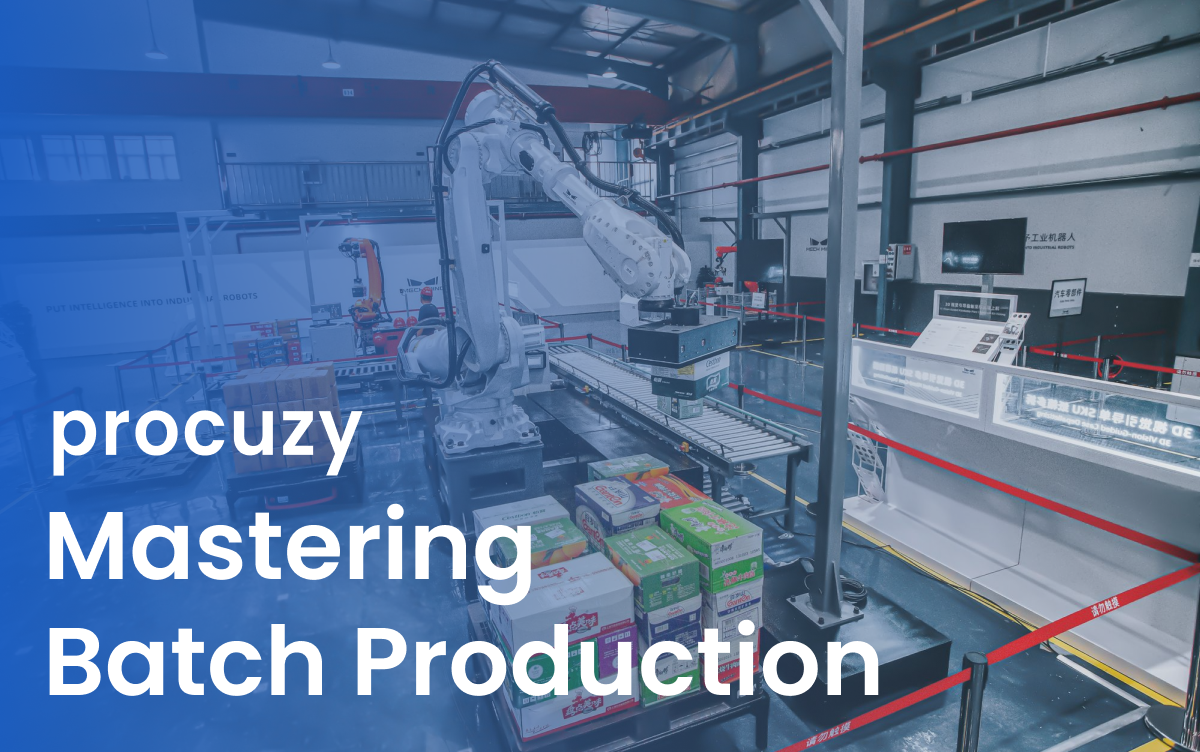
Why is batch production considered a game-changer in the manufacturing industry? Have you ever wondered how this method can improve efficiency, reduce waste, and enhance quality control.
According to a study conducted by the International Journal of Mechanical and Production Engineering, batch production has shown promising results in significantly improving productivity. In fact, their research revealed that companies implementing batch production experienced an average increase of 32% in productivity compared to traditional manufacturing methods.
Consider this example:
Imagine a car assembly line that produces multiple variations of vehicles. By utilizing batch production, the manufacturer can create different batches of cars with specific features or customizations, optimizing the production process. This approach not only reduces downtime in reconfiguring the assembly line but also allows for better resource allocation and improved quality control.
In this blog post, we will explore key strategies and best practices for mastering batch production and how it can help companies achieve their production goals.
Understanding Batch Production
Before we delve into the strategies for mastering batch production, let's first understand what batch production entails. In batch production, a set of identical or similar products is produced in a sequential order. This approach allows manufacturers to optimize their production processes by grouping tasks and resources together to increase efficiency.
Batch production is commonly used in industries such as food and beverage, pharmaceuticals, chemicals, and electronics, where products can be easily grouped based on factors such as size, shape, or production requirements. By manufacturing products in batches, companies can tailor their processes to specific requirements, improve quality control, and minimize production costs.
4 Key Strategies for Mastering Batch Production
1. Optimize Batch Size:
One of the critical factors in batch production is determining the optimal batch size. The batch size should be carefully calculated to balance the economies of scale with the need for flexibility.
For example, in the pharmaceutical industry, when producing medications in batches, the batch size should be determined based on factors such as market demand, shelf life, and regulatory requirements. A larger batch size can lead to cost savings through efficient use of resources, but it may also increase the risk of waste if demand fluctuates or quality issues arise.
On the other hand, smaller batch sizes offer greater flexibility but may result in higher production costs per unit.
2. Streamline Production Processes:
Efficient production processes are essential for mastering batch production. Manufacturers should strive to streamline their workflows by eliminating bottlenecks, reducing cycle times, and optimizing resource utilization.
For instance, in the automotive industry, manufacturers can implement just-in-time (JIT) production techniques to minimize inventory and improve production flow. Implementing lean manufacturing principles, such as 5S, value stream mapping, and continuous improvement, can help identify inefficiencies and opportunities for optimization.
Automation technologies also play a significant role in streamlining batch production. For example, in the food industry, robotic systems can automate tasks such as packaging, labeling, and palletizing, reducing dependence on manual labor and improving overall production efficiency.
3. Implement Quality Control Measures:
Quality control is a critical aspect of batch production that directly impacts product integrity and customer satisfaction. To ensure product quality, manufacturers should implement robust quality control measures throughout the production process. This includes conducting thorough inspections, testing raw materials, monitoring production parameters, and adhering to quality standards and regulations.
In the electronics industry, manufacturers rely on quality control measures such as automated testing equipment (ATE) to verify the functionality and reliability of components and finished products.
Statistical process control (SPC) techniques, such as control charts, Pareto analysis, and root cause analysis, can also be used to monitor and improve the quality of batch production processes. By collecting and analyzing data on key performance indicators, companies can identify trends, detect anomalies, and take corrective actions to prevent defects and non-conformities.
4. Invest in Training and Development:
To master batch production, companies must invest in training and development programs to equip their workforce with the knowledge and skills needed to excel in their roles. Training employees on best practices, safety protocols, and quality control procedures can enhance productivity, reduce errors, and promote a culture of continuous improvement.
For instance, in the chemical industry, where batch production requires stringent safety precautions, employees must undergo comprehensive training on handling hazardous materials, operating specialized equipment, and following standard operating procedures (SOPs).
Cross-training employees on multiple tasks and providing opportunities for skill development can also increase operational flexibility and agility in batch production environments. By empowering employees to take on diverse roles and responsibilities, companies can build a versatile workforce capable of adapting to changing production demands.
Benefits of Mastering Batch Production
This method offers several benefits, which improve efficiency, product quality, and overall business performance. Let's explore some of these benefits.
1. Cost Efficiency
Batch production allows for economies of scale, as producing in larger quantities reduces the per-unit cost. It enables businesses to optimize their resources, streamline processes, and lower production costs.
For instance, a food manufacturing company can produce a large batch of cookies, leveraging volume discounts on ingredients and reducing setup and cleanup time per batch.
2. Flexibility
Batch production offers greater flexibility compared to continuous production, as it allows for easier customization and adaptation to market demand. Manufacturers can easily switch between different products or product variations, depending on customer preferences. This flexibility enables businesses to respond quickly to changing market trends, reducing the risk of excess inventory or stock-outs.
Example: In the pharmaceutical industry, batch production allows manufacturers to produce different dosage forms and strengths of a drug without requiring separate production lines. This saves significant time and costs compared to continuous production methods.
3. Improved Quality Control
Mastering batch production enables better quality control as each batch can be thoroughly inspected, tested, and fine-tuned before moving onto the next batch. This reduces the risk of producing faulty or substandard products, aligning with the principles of lean manufacturing. Manufacturers can identify and address any issues or defects promptly, ensuring consistent product quality.
Example: In electronics manufacturing, batch production allows for stricter quality control by conducting comprehensive testing and quality checks at each stage of production. Faulty components or defective products can be identified and rectified before proceeding to the next batch.
4. Efficient Resource Allocation
By mastering batch production, businesses can allocate their resources more efficiently. They can plan and schedule production activities based on demand forecasts, optimizing the utilization of equipment, labor, and materials. This efficient resource allocation helps reduce bottlenecks, minimize downtime, and improve overall production capacity.
Example: In automotive manufacturing, batch production enables better resource allocation by sequencing and aligning assembly line operations. By grouping similar tasks together, such as installing brake systems or wiring harnesses, manufacturers can optimize production flow and utilize their resources effectively.
Conclusion
As a manufacturer striving to enhance efficiency, maintain superior quality control. By focusing on optimizing batch size, streamlining production processes, implementing robust quality control measures, and investing in continuous training and development, your company can achieve sustainable growth and resounding success in batch manufacturing.
To take your batch production to the next level, Partner with Procuzy. With our industry-leading expertise in supply chain management and procurement solutions, Procuzy can help streamline your manufacturing operations, reduce costs, and improve overall efficiency. Don't miss out on this incredible opportunity to revolutionize your manufacturing processes.
Take the first step towards achieving your manufacturing goals by visiting Procuzy's website today. Let Procuzy empower your company with innovation and expertise – because when it comes to batch production, we are the partner you can trust.


